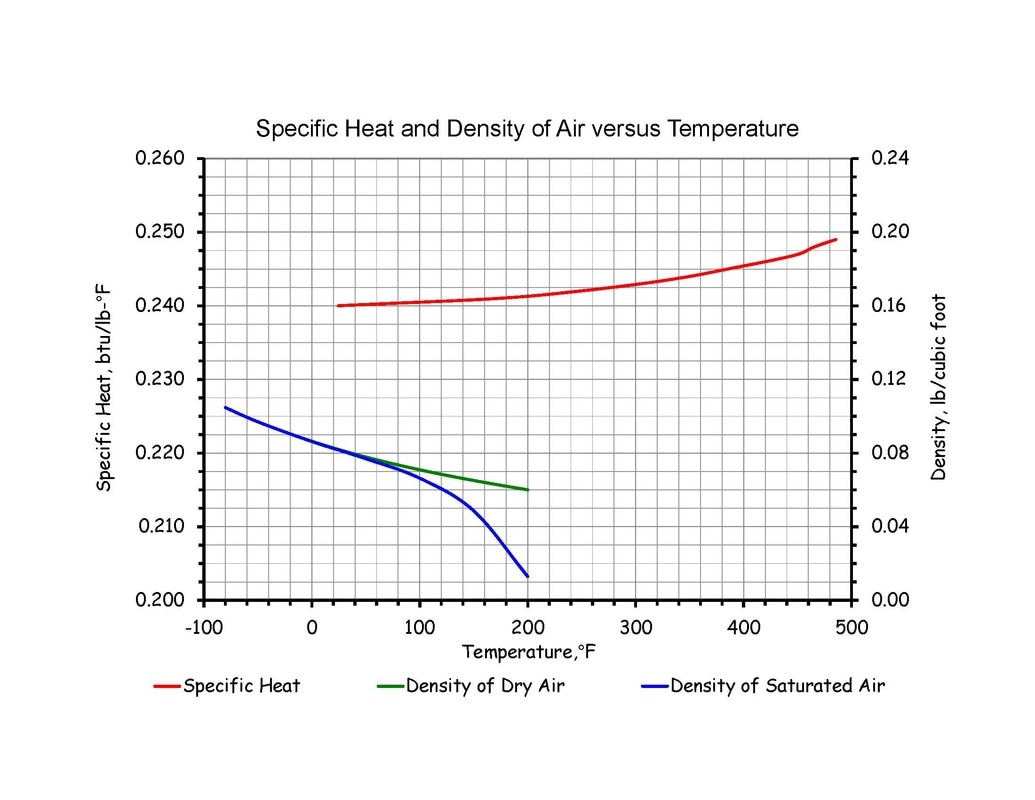Altitude Correction Factor SpreadsheetMany of the equations we use in HVAC calculations involve air flow and virtually all of the equations we use in HVAC calculations have a units conversion constant in them. For instance, in the equation for sensible load ...
... the 1.08 is the units conversion constant, which allows us to multiply a flow rate with units of cubic feet per minute by a temperature difference in °F and come up with Btu's per hour.
|
The problem is that the units conversion constant in this case includes a density term (that's part of how we convert cubic feet per minute to pounds per hour), and a specific heat term (that's how we convert a temperature difference into a quantity of energy per pound of air). And, as you can see from the chart above, both of those metrics vary with temperature.
In other words, units conversion constants are not always constant. If you are interested in how the 1.08 in the equation above is derived and the impact changes in the properties of air can have on it, that is discussed in a post on our blog titled Unit Conversion Constants; Not Always Constant.
The point here is that the constant isn't constant and for air, most of the time, the factor that impacts the units conversion constant the most in HVAC applications is the variation in density with altitude. Obviously, as you can see from the graph, temperature impacts the density of air, especially moist air, even at a constant altitude. But the impact at the temperatures typically seen in HVAC systems is less significant than the impact of altitude.
Towards that end, this spreadsheet has a calculator in it that creates a correction factor to be used with common HVAC equations when you apply them at higher elevations; Denver, for instance. The spreadsheet assumes the profile associated with a "standard atmosphere" and also includes:
In other words, units conversion constants are not always constant. If you are interested in how the 1.08 in the equation above is derived and the impact changes in the properties of air can have on it, that is discussed in a post on our blog titled Unit Conversion Constants; Not Always Constant.
The point here is that the constant isn't constant and for air, most of the time, the factor that impacts the units conversion constant the most in HVAC applications is the variation in density with altitude. Obviously, as you can see from the graph, temperature impacts the density of air, especially moist air, even at a constant altitude. But the impact at the temperatures typically seen in HVAC systems is less significant than the impact of altitude.
Towards that end, this spreadsheet has a calculator in it that creates a correction factor to be used with common HVAC equations when you apply them at higher elevations; Denver, for instance. The spreadsheet assumes the profile associated with a "standard atmosphere" and also includes:
- The data behind the chart above as well as the chart
- The derivation of the units conversion constant in the equation above for a number of different conditions
- A table with the composition of dry air
| Altitude Correction Factor Spreadsheet (standard_atmosphere_vblog.xlsx) |


